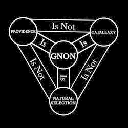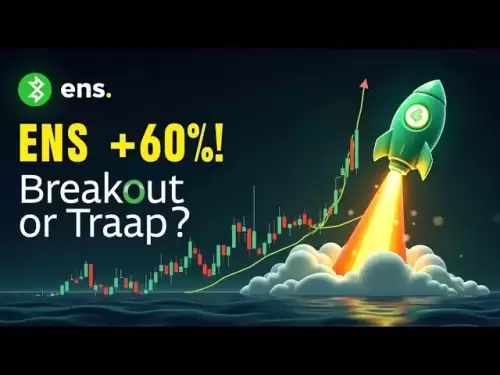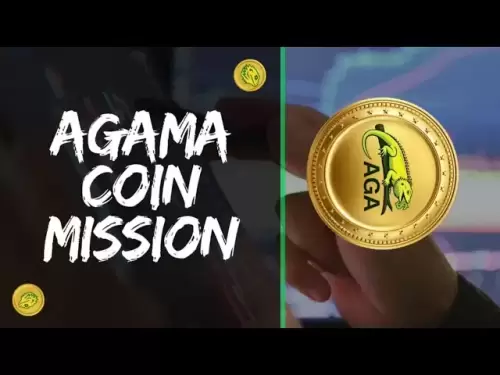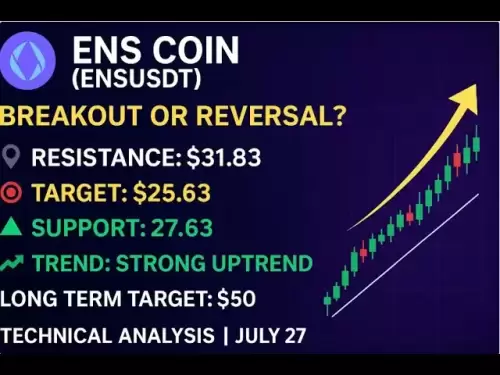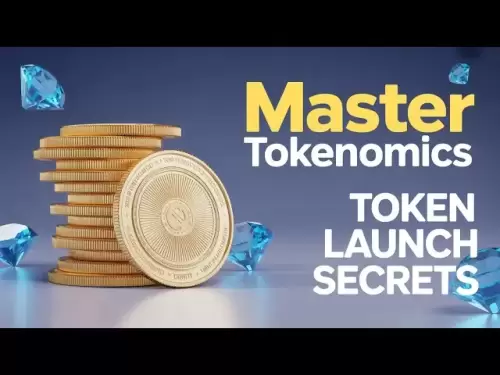-
 Bitcoin
Bitcoin $117900
0.31% -
 Ethereum
Ethereum $3766
0.28% -
 XRP
XRP $3.176
-0.31% -
 Tether USDt
Tether USDt $1.000
0.00% -
 BNB
BNB $795.6
1.51% -
 Solana
Solana $186.8
-1.09% -
 USDC
USDC $0.9999
-0.01% -
 Dogecoin
Dogecoin $0.2353
-1.33% -
 TRON
TRON $0.3226
1.49% -
 Cardano
Cardano $0.8172
-1.08% -
 Sui
Sui $4.178
3.06% -
 Hyperliquid
Hyperliquid $43.05
-3.39% -
 Stellar
Stellar $0.4367
-0.57% -
 Chainlink
Chainlink $18.62
1.47% -
 Hedera
Hedera $0.2828
6.63% -
 Bitcoin Cash
Bitcoin Cash $584.7
5.65% -
 Avalanche
Avalanche $24.81
2.53% -
 Litecoin
Litecoin $112.8
-0.88% -
 UNUS SED LEO
UNUS SED LEO $8.975
-0.08% -
 Shiba Inu
Shiba Inu $0.00001395
-1.07% -
 Toncoin
Toncoin $3.285
-1.05% -
 Ethena USDe
Ethena USDe $1.001
0.01% -
 Polkadot
Polkadot $4.123
0.76% -
 Uniswap
Uniswap $10.49
-0.18% -
 Monero
Monero $326.5
0.14% -
 Dai
Dai $0.9999
-0.02% -
 Bitget Token
Bitget Token $4.576
0.34% -
 Pepe
Pepe $0.00001247
-1.55% -
 Cronos
Cronos $0.1400
3.77% -
 Aave
Aave $295.1
-0.73%
How does a decentralized autonomous organization (DAO) rely on blockchain to operate?
DAOs rely on blockchain for transparency, immutability, and automation via smart contracts, enabling decentralized governance and tokenized membership incentives.
Mar 27, 2025 at 03:28 pm
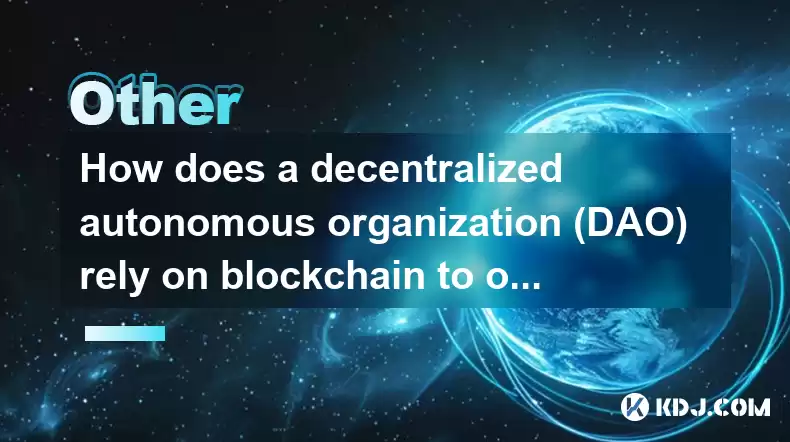
The Blockchain Backbone of DAOs
Decentralized Autonomous Organizations (DAOs) are fundamentally reliant on blockchain technology for their existence and operation. Without blockchain's inherent properties, a DAO simply wouldn't be possible. The core functionalities of a DAO – transparency, immutability, and automation – are all directly enabled by the blockchain. Let's explore how this works in detail.
Transparency Through Public Ledger
One of the most crucial aspects of a DAO is its transparency. All transactions, proposals, and voting records are recorded on a public, immutable blockchain. This ensures that all members have access to the same information, fostering trust and accountability. This public nature contrasts sharply with traditional organizations where internal workings are often opaque. The blockchain acts as a shared, verifiable record, eliminating the need for intermediaries to verify information.
Immutability and Security
The immutability of blockchain is another critical feature underpinning DAO functionality. Once a transaction or vote is recorded on the blockchain, it cannot be altered or deleted. This prevents manipulation and ensures the integrity of the DAO's operations. This security is paramount, as it protects against fraudulent activities and ensures the fairness of decision-making processes. The cryptographic security of the blockchain further enhances the DAO's resilience against attacks.
Smart Contracts: The Engine of Automation
Smart contracts are self-executing contracts with the terms of the agreement between buyer and seller being directly written into lines of code. These contracts, residing on the blockchain, automate many DAO functions. This automation eliminates the need for centralized authorities to manage the organization. Smart contracts handle tasks such as distributing funds, managing membership, and executing proposals based on predefined rules and voting outcomes.
Governance and Decision-Making
DAOs utilize blockchain to facilitate their governance mechanisms. Members can propose changes, vote on proposals, and participate in the decision-making process directly through the blockchain. This decentralized governance model contrasts with traditional organizations, where power is often concentrated in the hands of a few individuals. Blockchain enables a more democratic and inclusive governance structure. The voting process itself is often recorded transparently on the blockchain.
Tokenized Membership and Incentives
Many DAOs utilize tokens to represent membership and provide incentives for participation. These tokens can grant voting rights, access to exclusive resources, or reward contributions to the DAO's success. The distribution and management of these tokens are often handled by smart contracts deployed on the blockchain, ensuring a fair and transparent process. This tokenized structure fosters community engagement and aligns member incentives with the DAO's overall goals.
Data Storage and Access
The blockchain itself doesn't always store all the data related to a DAO. While transaction history and governance data are on the chain, larger files or complex data might be stored off-chain, potentially using decentralized storage solutions like IPFS (InterPlanetary File System). However, the references to this off-chain data are often stored on the blockchain, ensuring verifiable access and preventing tampering. This hybrid approach balances the need for transparency with the practical limitations of on-chain storage.
Scalability and Performance
A significant challenge for DAOs is the scalability of blockchain technology. Many blockchains have limitations in terms of transaction throughput and speed. This can impact the efficiency of DAO operations, especially when dealing with a large number of members and transactions. Solutions like layer-2 scaling solutions and alternative blockchain platforms are actively being explored to address this issue. The choice of blockchain significantly impacts a DAO's performance.
Interoperability and Cross-Chain Communication
As the blockchain ecosystem evolves, the need for interoperability between different blockchains is becoming increasingly important. DAOs might need to interact with multiple blockchains or utilize services from different platforms. The ability to seamlessly communicate and exchange data across different blockchain networks is crucial for the future of DAOs. This requires the development of robust cross-chain communication protocols.
Security Risks and Vulnerabilities
While blockchain enhances security, DAOs are not immune to vulnerabilities. Smart contract bugs, exploits, and attacks on the blockchain itself can pose significant risks. Careful auditing of smart contracts and robust security practices are essential to mitigate these risks. The decentralized nature doesn't eliminate the need for security best practices. Thorough security audits are crucial before deploying any smart contracts.
Funding and Treasury Management
DAOs typically manage their funds through a treasury held in cryptocurrency. The management of this treasury is often governed by smart contracts, ensuring transparency and accountability. Proposals for spending treasury funds are typically subject to a voting process, empowering members to control the DAO's financial resources. The security of the treasury is paramount and requires careful consideration.
Evolution and Future of DAOs
DAOs are a relatively new concept, and their evolution is ongoing. New technologies and improvements in blockchain infrastructure are constantly shaping the way DAOs operate. The future of DAOs is likely to see increased sophistication in governance mechanisms, improved scalability, and greater integration with other decentralized technologies. The development of more user-friendly interfaces is also crucial for wider adoption.
Frequently Asked Questions
Q: What are the advantages of using blockchain for DAOs?
A: Blockchain provides transparency, immutability, security, and automation, all crucial for the effective operation of a decentralized organization. It enables democratic governance and facilitates the use of smart contracts for automated processes.
Q: What are the potential risks associated with using blockchain for DAOs?
A: Risks include smart contract vulnerabilities, blockchain attacks, scalability limitations, and regulatory uncertainty. Careful planning, security audits, and risk management are essential.
Q: How does a DAO handle disputes or disagreements among members?
A: Dispute resolution mechanisms vary depending on the DAO's governance rules. These might involve voting processes, arbitration, or other methods outlined in the DAO's smart contracts.
Q: Can anyone join a DAO?
A: Membership requirements vary greatly between DAOs. Some may have open membership, while others may have specific criteria or a token-based access system.
Q: How are DAOs regulated?
A: The regulatory landscape for DAOs is still evolving and varies significantly by jurisdiction. Many jurisdictions lack clear regulatory frameworks specifically for DAOs, leading to uncertainty.
Q: What are some examples of successful DAOs?
A: Numerous DAOs exist across various sectors, with varying degrees of success. Examples include those focused on decentralized finance (DeFi), community governance, and non-fungible tokens (NFTs). Researching specific examples will provide a better understanding of their operational models.
Disclaimer:info@kdj.com
The information provided is not trading advice. kdj.com does not assume any responsibility for any investments made based on the information provided in this article. Cryptocurrencies are highly volatile and it is highly recommended that you invest with caution after thorough research!
If you believe that the content used on this website infringes your copyright, please contact us immediately (info@kdj.com) and we will delete it promptly.
- Bitcoin, Ruvi AI, and CoinMarketCap: Navigating the Future of Crypto
- 2025-07-28 02:30:12
- Dogwifhat (WIF) Eyes Bullish Breakout: Can It Breach $1.20?
- 2025-07-28 02:50:12
- Bitcoin Bounces: How the US-China Tariff Truce Impacts Crypto
- 2025-07-28 02:50:12
- Bitcoin Bull Market: Price Targets and Expert Takes
- 2025-07-28 02:30:12
- Cardano Price Rockets: ADA Jumps Past Resistance, $2 Target in Sight?
- 2025-07-28 01:30:14
- Ruvi AI: The Next Solana? Riding the AI Token Wave on CoinMarketCap
- 2025-07-28 00:50:16
Related knowledge
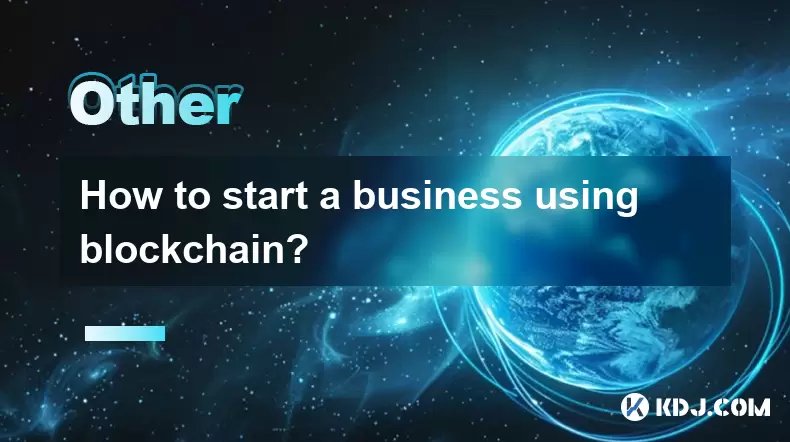
How to start a business using blockchain?
Jul 28,2025 at 12:36am
Understanding the Basics of Blockchain TechnologyBefore diving into the process of starting a business using blockchain, it's crucial to understand wh...
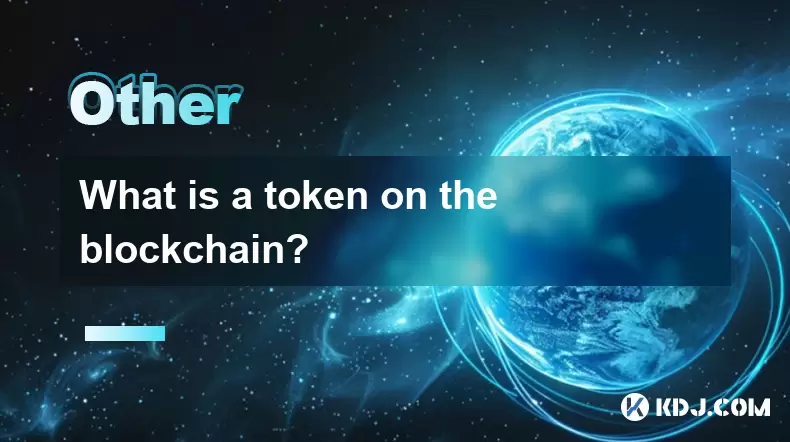
What is a token on the blockchain?
Jul 21,2025 at 07:00am
Understanding the Concept of a TokenIn the realm of blockchain technology, a token is a digital representation of an asset or utility that exists on a...
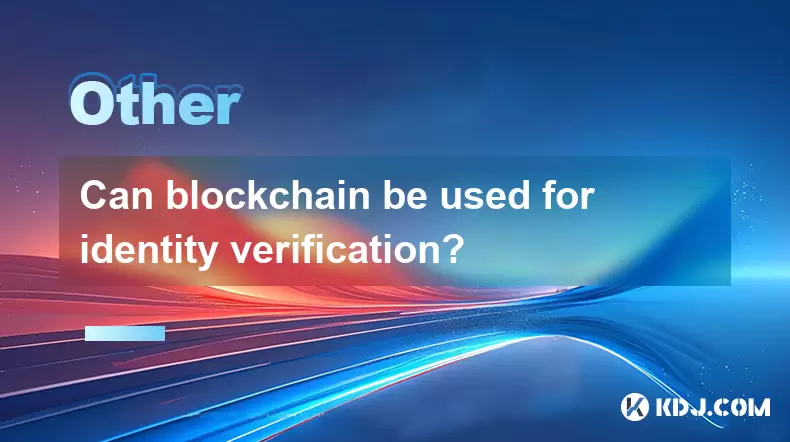
Can blockchain be used for identity verification?
Jul 18,2025 at 02:14pm
Understanding Identity Verification in the Digital AgeIn the modern digital landscape, identity verification has become a critical component for ensur...
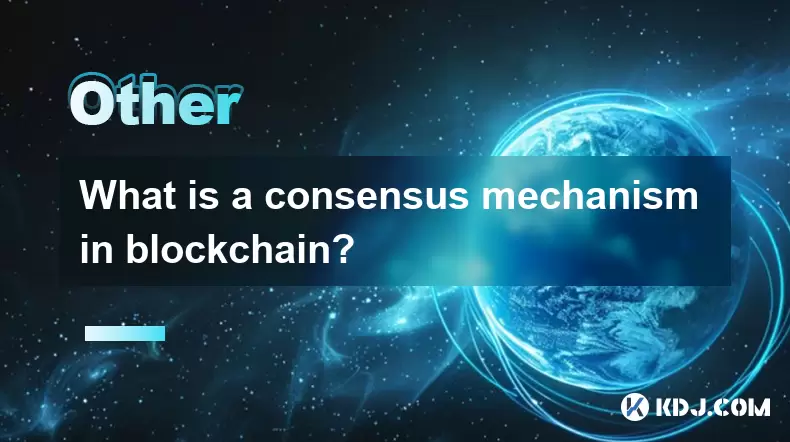
What is a consensus mechanism in blockchain?
Jul 21,2025 at 03:01am
Understanding the Basics of Consensus MechanismsA consensus mechanism is a critical component of any blockchain network. It refers to the process by w...
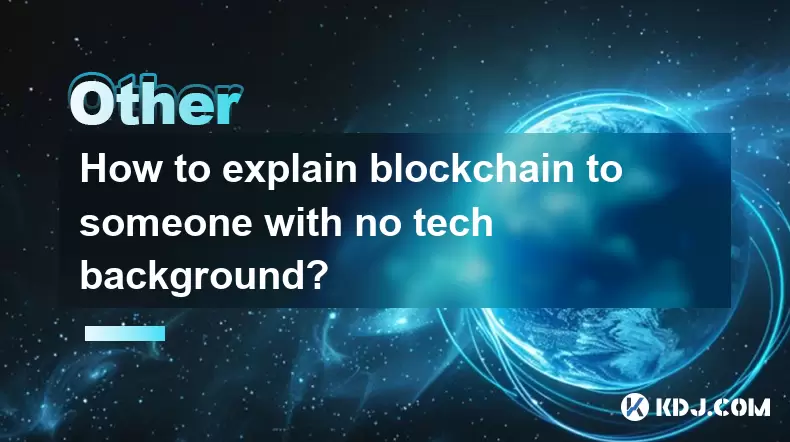
How to explain blockchain to someone with no tech background?
Jul 18,2025 at 11:08pm
Understanding the Basics of BlockchainTo explain blockchain to someone with no tech background, it's essential to start with simple analogies and avoi...
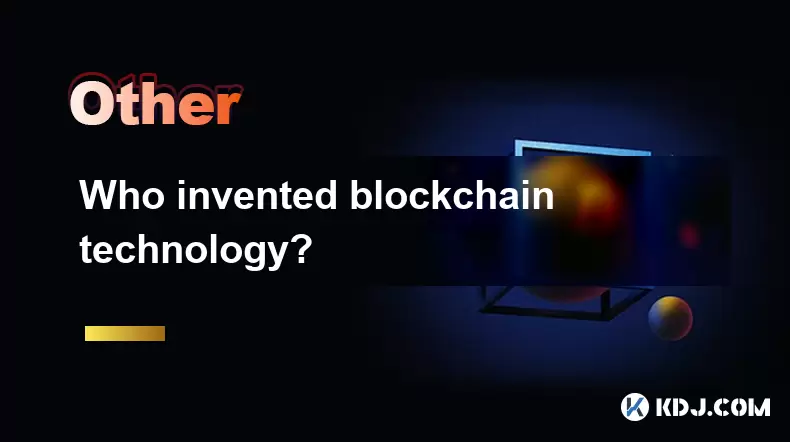
Who invented blockchain technology?
Jul 23,2025 at 01:28am
Origins of Blockchain TechnologyBlockchain technology did not emerge from a single inventor or institution. Instead, it evolved through a series of ac...

How to start a business using blockchain?
Jul 28,2025 at 12:36am
Understanding the Basics of Blockchain TechnologyBefore diving into the process of starting a business using blockchain, it's crucial to understand wh...

What is a token on the blockchain?
Jul 21,2025 at 07:00am
Understanding the Concept of a TokenIn the realm of blockchain technology, a token is a digital representation of an asset or utility that exists on a...

Can blockchain be used for identity verification?
Jul 18,2025 at 02:14pm
Understanding Identity Verification in the Digital AgeIn the modern digital landscape, identity verification has become a critical component for ensur...

What is a consensus mechanism in blockchain?
Jul 21,2025 at 03:01am
Understanding the Basics of Consensus MechanismsA consensus mechanism is a critical component of any blockchain network. It refers to the process by w...

How to explain blockchain to someone with no tech background?
Jul 18,2025 at 11:08pm
Understanding the Basics of BlockchainTo explain blockchain to someone with no tech background, it's essential to start with simple analogies and avoi...

Who invented blockchain technology?
Jul 23,2025 at 01:28am
Origins of Blockchain TechnologyBlockchain technology did not emerge from a single inventor or institution. Instead, it evolved through a series of ac...
See all articles
















